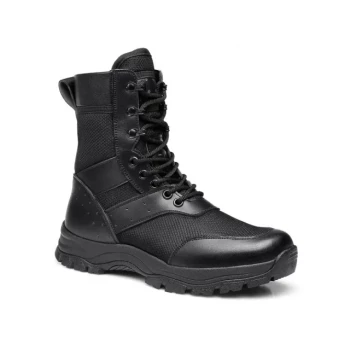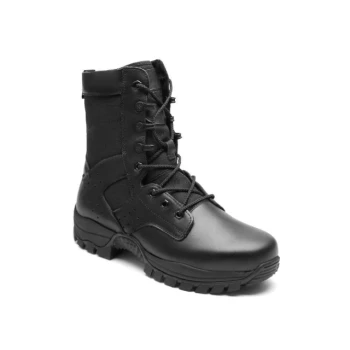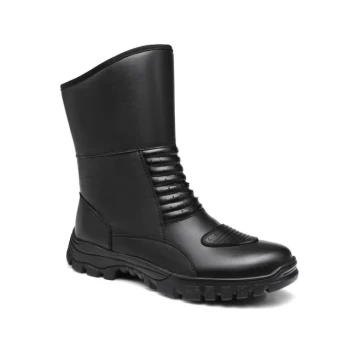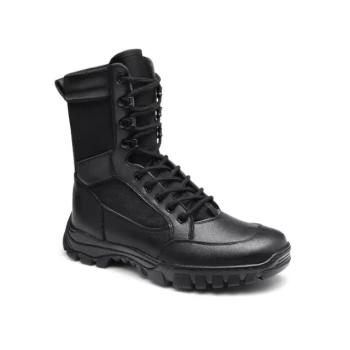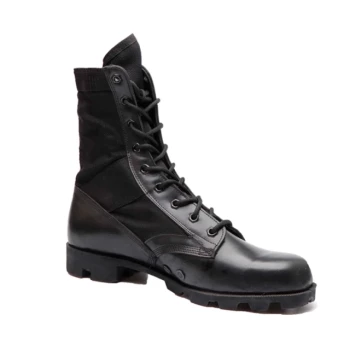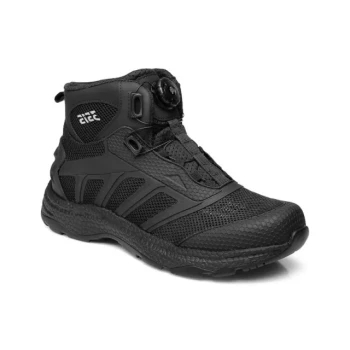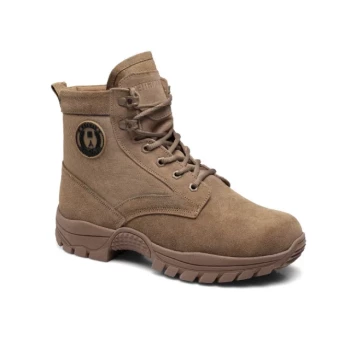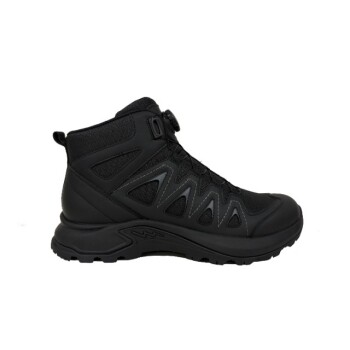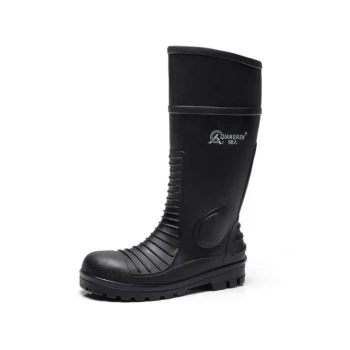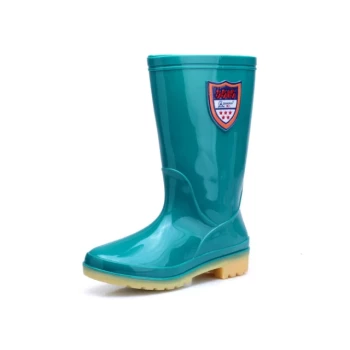At its core, the midsole of a tactical boot serves two critical functions: shock absorption and structural support. The primary features are determined by its material composition, most commonly Ethylene-vinyl acetate (EVA) for lightweight cushioning or Polyurethane (PU) for long-term durability, which dictates the boot's overall performance and feel.
The midsole is the unseen engine of a tactical boot. Understanding the material it's made from is the single most important factor in choosing between immediate, lightweight comfort and rugged, long-lasting stability.
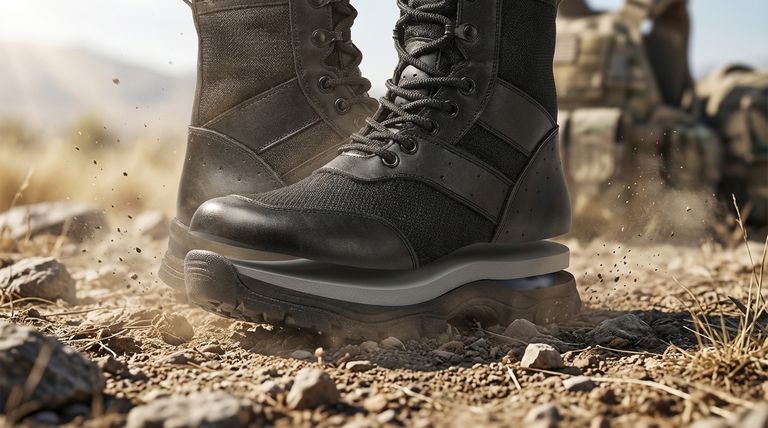
The Midsole's Critical Role
The midsole is the layer between the insole (footbed) and the outsole (the part that touches the ground). While other components are important, the midsole is what truly defines a boot's character under load.
Absorbing Shock and Reducing Fatigue
Every step, jump, or run generates impact forces that travel up through your feet, ankles, and knees. The midsole's primary job is to act as a shock absorber, dissipating these forces.
A well-designed midsole directly reduces the cumulative stress on your joints and muscles, which is critical for preventing fatigue and injury during long hours on your feet.
Providing Stability and Stiffness
The midsole also determines the boot's torsional rigidity, or its resistance to twisting. A firmer midsole provides a more stable platform.
This stiffness is crucial on uneven or rocky terrain, as it prevents your foot from over-flexing and helps maintain balance, reducing the strain on your arches and ankles.
Key Midsole Materials and Their Properties
The choice of material is not arbitrary; it's a deliberate engineering decision that tailors the boot for a specific purpose.
EVA (Ethylene-vinyl acetate): The Lightweight Cushioner
EVA is a lightweight and flexible foam that provides excellent cushioning and shock absorption. It feels soft and comfortable right out of the box.
This material is ideal for boots where mobility, speed, and reduced weight are the top priorities.
Polyurethane (PU): The Durable Foundation
PU is a denser, firmer, and more durable material than EVA. It offers superior resistance to compression, meaning it won't "pack down" or lose its shape as quickly.
Boots with PU midsoles provide consistent, long-term support and are built to withstand heavy use and carry significant loads.
Dual-Density Midsoles: The Hybrid Approach
Many modern tactical boots use a dual-density midsole, combining the best attributes of both materials.
This approach strategically places firmer PU for stability and support (often around the heel and arch) while using softer EVA in other areas for targeted cushioning and flexibility.
Understanding the Trade-offs: Comfort vs. Durability
Choosing the right midsole involves a clear trade-off. There is no single "best" material, only the best material for a specific application.
The Immediate Feel
EVA-based midsoles offer a higher level of initial comfort, feeling plush and forgiving from the first wear. They require virtually no break-in period.
PU midsoles often feel firmer initially but provide more consistent and resilient support over the life of the boot, preventing the "bottoming out" feeling that can occur as EVA wears down.
The Long-Term Performance
The primary weakness of EVA is its tendency to compress over time, permanently losing its cushioning and support.
PU is significantly more durable and will maintain its structural integrity and shock-absorbing properties for a much longer period, making it the superior choice for a long-service-life boot.
Making the Right Choice for Your Mission
Your intended use should dictate your midsole preference. Analyze your primary activity to select the boot that will serve you best.
- If your primary focus is mobility and speed: Prioritize a boot with a lightweight EVA midsole for maximum flexibility and immediate comfort in urban or less demanding environments.
- If your primary focus is durability and load-bearing: Choose a boot with a polyurethane (PU) midsole for its superior stability and resistance to compression on rugged terrain or when carrying heavy gear.
- If your primary focus is all-around versatility: A dual-density midsole offers the most balanced solution, providing both targeted cushioning and reliable support for mixed-use scenarios.
Ultimately, matching the midsole's features to your specific needs is the key to achieving optimal performance and long-term foot health.
Summary Table:
| Midsole Material | Key Property | Best For |
|---|---|---|
| EVA (Ethylene-vinyl acetate) | Lightweight, excellent cushioning | Mobility, speed, immediate comfort |
| PU (Polyurethane) | Durable, firm, long-term support | Rugged terrain, heavy loads, long service life |
| Dual-Density (EVA + PU) | Hybrid approach; cushioning & stability | All-around versatility, balanced performance |
Need tactical boots built for your specific mission?
As a large-scale manufacturer, 3515 produces a comprehensive range of footwear for distributors, brand owners, and bulk clients. Our production capabilities encompass all types of tactical boots, allowing us to engineer the perfect midsole—whether EVA, PU, or a custom dual-density design—to meet your exact requirements for durability, comfort, and performance.
Contact our experts today to discuss your tactical boot needs and leverage our manufacturing expertise.
Visual Guide
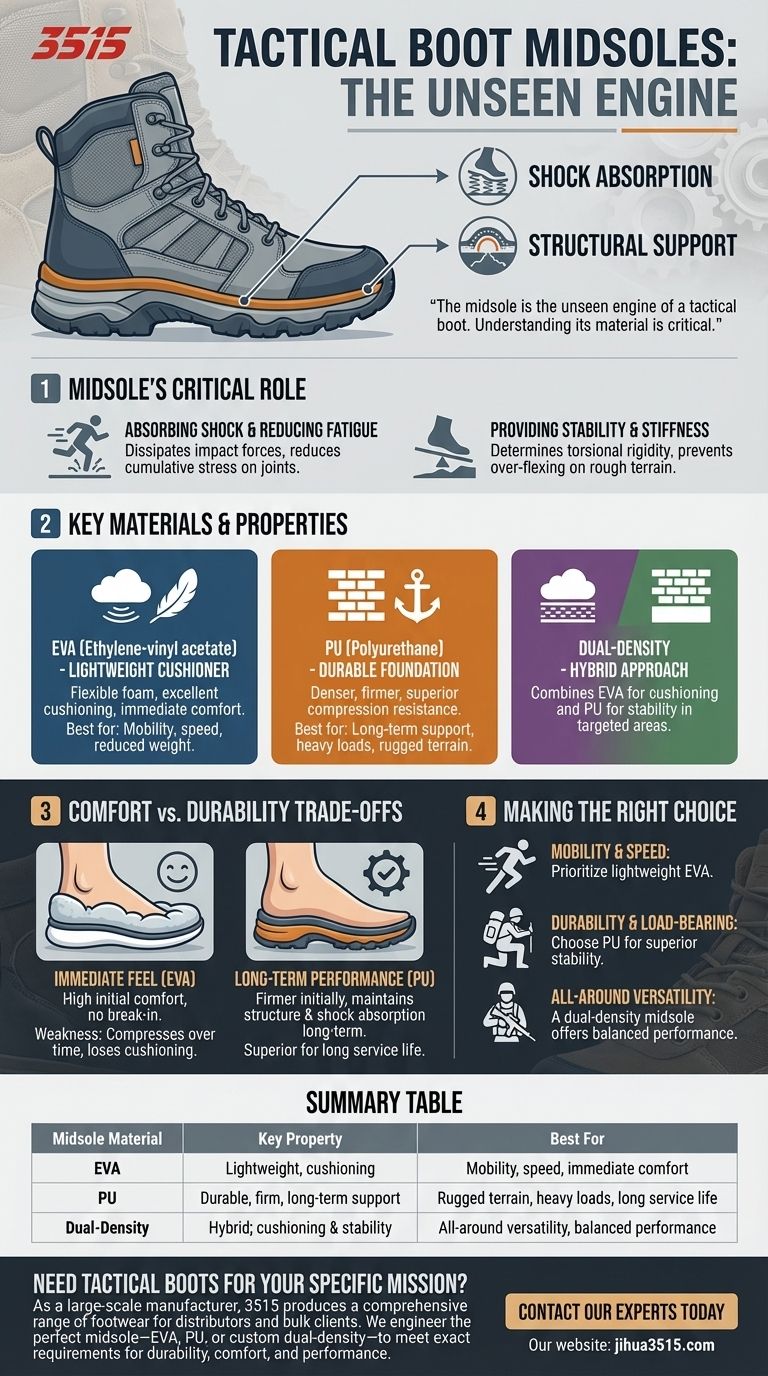
Related Products
- Durable Leather High-Ankle Tactical Boots for Wholesale & Custom Manufacturing
- Durable Leather Tactical Boots Wholesale & Custom Manufacturing for Brands
- Wholesale Tactical Boots High-Traction & Reflective for Bulk & Brand Orders
- Durable High-Ankle Tactical Boots Wholesale Manufacturer for Custom & Bulk Orders
- Durable Military Combat Boots with Water Drainage for Wholesale & OEM
People Also Ask
- What does the upper part of a tactical boot cover? Your Guide to Protection, Fit, and Performance
- How do tactical boots differ from regular footwear? A Guide to Purpose-Built Performance
- In what scenarios are tactical boots particularly useful? Maximize Mobility and Durability in Demanding Environments
- What is the function of the insole in tactical boots? A Guide to Foot Support & Performance
- Why do tactical boots have high ankle support? Unlock Maximum Stability & Injury Prevention
